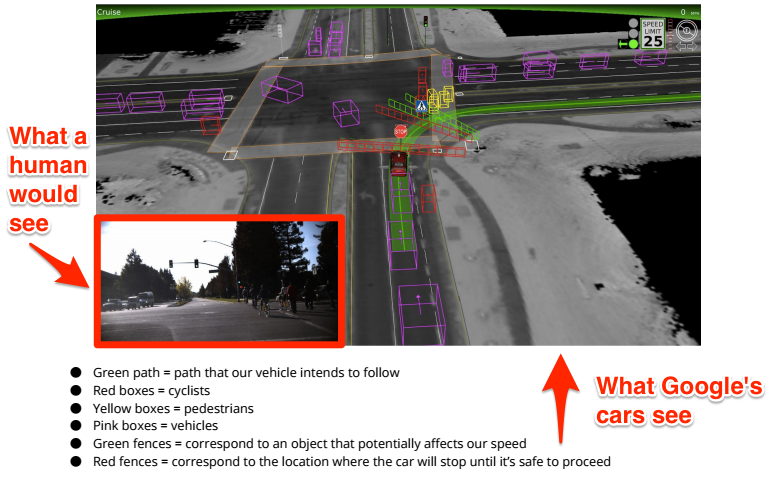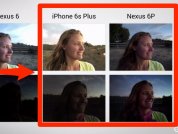 Jacqui
Jacqui
See Also
I knew that Google’s self-driving cars looked adorable, but the full scope of how dramatically their technology will change the world really hit me earlier this week.
At a panel Google hosted to update the press on its progress, the company dished out some dazzling stats, like that its self-driving automobiles have traveled 1.2 million miles in full autonomy on public roads.
Pooling together all of the data from all of its cars, the software inside each one has approximately 90 years of driving experience.Â
I’ve always been fascinated by specific use cases for autonomous automobiles, like how they will give blind people and the elderly much more independent mobility, which has been shown to generally increase quality of life. Self-driving cars will be a godsend for people who can’t otherwise safely drive on their own (including drunken party-goers).Â
But having read stories about Google’s cars getting confused by fixie bicycles or held up by rain, I still pictured my skills trumping those of a robotic car for a long-time to come.Â
That changed completely less than 24 hours after Google’s presentation, when I had to drive to and from Los Altos, California. What would otherwise have seemed like a completely typical trip suddenly made me realize just how pathetic a driver I am compared to one of Google’s cars.
 Flickr/Lord Jim
Flickr/Lord Jim
Suddenly, I couldn’t wait to get out of that car. The person driving next to me, yapping on her phone, immediately seemed like a threat. As did the fact that I was taking my eyes away from the road ahead to look at her. I have never loved driving, but recognizing all the normal minutiae as potentially dangerous distractions makes me hate it.Â
Every year, 1.2 million people die in car accidents, more than 33,000 of them in the US. During the panel, the new CEO of the self-driving car program, John Krafcik, equated that to five Boeing 737’s crashing every week. That rate would be completely unacceptable, he says, so why do we still accept it on our roads?Â
During its presentation, Google also boasted that by using a combination of cameras, radars, and lasers, its cars can “see” as far as two football fields away, with 360 degrees of visibility. Humans, on the other hand, can only see about 120 degrees around us while driving. The cars know that a stop sign is coming up before it’s in view, because they’ve got the route all mapped. They can sense hundreds of different objects around them at the same time — re-scanning the world many, many times per second — while I lost focus and caused a jarring halt just because I was caught up in my internal environment.Â
Having really noticed how much less observant I am than one of Google’s cars, I never want to drive again — it just seems so dangerous. I’d rather put my trust in its lasers and cameras than my own wandering attention and fallible eyes. Never have I been more grateful to live in a city with ample public transportation.Â
Here’s what Google’s car sees, versus a person’s view of the same area:
 Google
Google
Even though there are still a ton of big questions and hurdles ahead — like how Google will partner with auto companies (it won’t make its own cars), what can be done to prevent hacking, and, yes, how the cars will do in the snow — self-driving cars could become a reality sooner than I thought:Â
Another exec at the panel, Chris Urmson, flashed a picture of his two sons on the screen, noting that he envisions the technology breaking into the real world soon enough that his 12-year-old will never have to get his license. That’s a future I welcome with open arms.Â
Article source: http://www.businessinsider.com/google-self-driving-cars-2015-10



